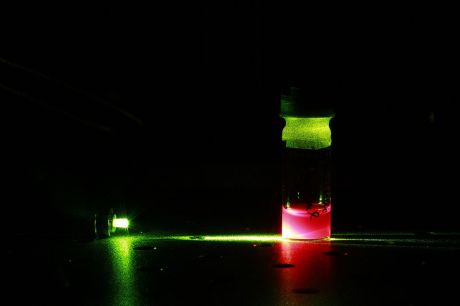EU-funded researchers produced a tuneable laser oscillator that generates signals in the microwave, millimetre-wave and the terahertz (THz) frequency range. This ultra-high frequency oscillator could be a key innovation in the communications sector.
New photonic approaches for the generation of ultra-high frequency signals were the focus of the EU-funded project NINFA (Nanostructure injected lasers for ultra-high frequency applications). These offer reduced cost and complexity, frequency tunability and lower energy consumption in comparison to traditional techniques based on electronic circuitry.
Various techniques using semiconductor lasers were developed for the generation of ultra-high frequency signals. Among others, mode-locking can generate low noise microwave and millimetre-wave signals. Yet, the generated signal frequency is determined by the frequency spacing of the laser's longitudinal mode. Optical injection is the technique that allows the generation of tuneable signals.
Previously, researchers considered the use of traditional quantum-well lasers to generate microwave, millimetre-wave, and THz signals. The NINFA project team explored the use of nanostructure lasers built with advanced quantum dash and quantum dot active regions. These devices attracted their attention due to superior properties such as reduced temperature dependence.
NINFA researchers studied quantum-dash and quantum-dot lasers in great detail at two wavelengths of relevance for telecommunications applications, namely 1310 nm and 1550 nm. Thanks to groundbreaking experimental work, they were able to produce comprehensive stability maps describing their non-linear behaviour.
Elucidation of these behaviours confirmed the suitability of optical injection for the generation of tuneable ultra-high frequency signals. The NINFA team developed for the first time a quantum-dot laser-based microwave signal generation system. This system permitted frequency tunability from below 1 gigahertz (GHz) to over 40 GHz and is compatible with fibre-optic telecommunication technologies.
Additional research work led to the generation of tuneable signals with frequencies ranging from 119 to 954 GHz. This availability of a wider frequency range with nanostructure lasers highlights their potential for applications in imaging, spectroscopy and security. Quantum laser technology holds great promise for superior performance, and the NINFA project has paved the way to exciting new applications.

